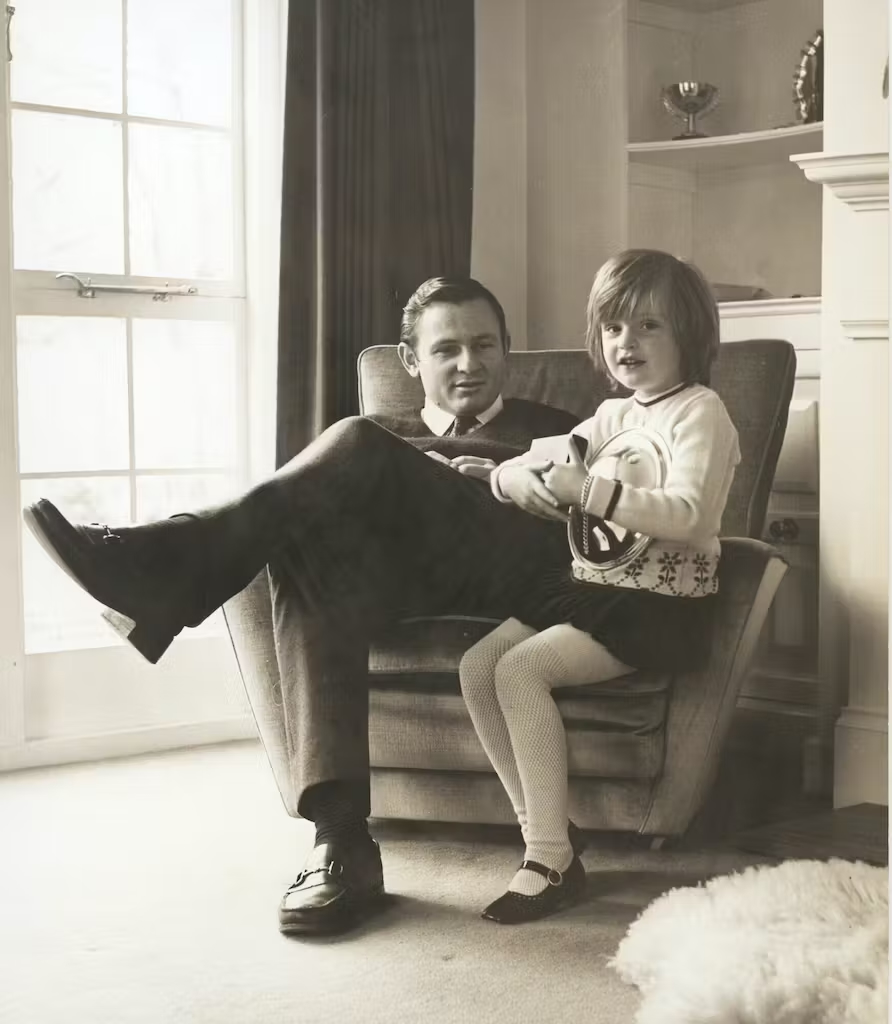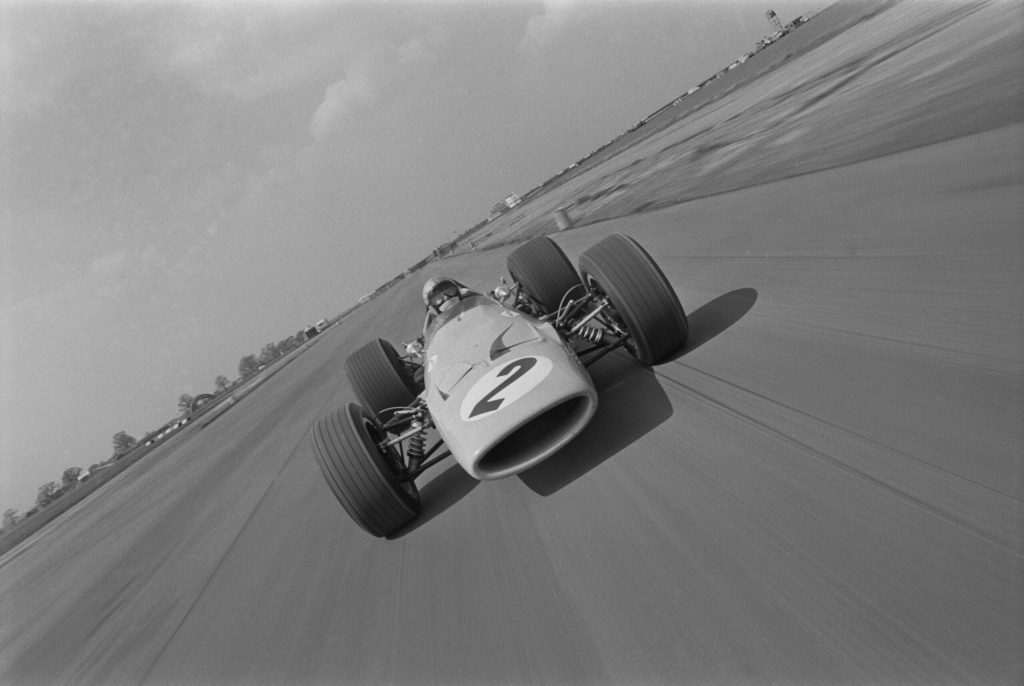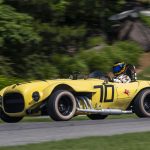Before the Formula 1 championships or the transcendent supercars, there was just Bruce.
The connection between McLaren the man and McLaren the company isn’t as widely understood today as, say, Carroll Shelby to Shelby American or Enzo Ferrari to Ferrari. Blame the brutalities of racing: Carroll and Enzo were lucky enough to survive their stints as drivers and see their companies flourish; Bruce was tragically killed testing a Can-Am car in 1970, years before McLaren’s Formula 1 championships and decades before the launch of the F1 supercar.

Yet McLaren’s life and incredible drive have a lot to do with the success the company ultimately achieved both as a racing team and an automaker. To better understand Bruce McLaren, the man, Larry Webster sat down with McLaren’s daughter, Amanda McLaren, on the occasion of the company’s 60th anniversary.

LW: Even casual car enthusiasts know McLaren as a maker of supercars and a Formula 1 constructor. They might not, however, know as much about how it all started. Can you tell us a bit about that?
AM: My father was actually born in New Zealand [not England, where the company resides]. At a very young age, he developed Perthes disease, a degenerative condition of the hip joint. He was told at the age of about 12 or 13 that he may never walk again. But he was a little kid with a big dream – he wanted to race cars. And over the years, he built himself a little race car, which if any of you go to McLaren Technology Centre in Woking, England, is actually there.
He raced through the New Zealand circuit and was awarded the inaugural Driver to Europe scholarship that the New Zealand International Grand Prix Association started. He raced Coopers for a number of years, but he always wanted to design and build his own cars. That’s what inspired him to form his own team. So, in 1963, he founded Bruce McLaren Motor Racing. He was very successful on track, especially in the dominant Can-Am series across Canada and America.

LW: It’s easy to forget how short of a time span some incredible things happened – he founds the company in 1963, wins Le Mans for Ford in 1966, becomes one of the few people to build and drive his own car in a Formula 1 race in 1968, and builds a car for Can-Am and dominates the series. That’s sort of where you pick up the storey. Did he ever sleep?
AM: My mother [Patty McLaren-Brickett] said that he could actually just nap anywhere! There’s some beautiful pictures of him in the pits lying against a tyre, fast asleep. Because, yes, he was developing cars for himself, he was working with Ford and Firestone to develop their cars and products – which really was funding for the McLaren Formula 1 team – he was racing Formula 1 but also Can-Am across Canada and America. He was rarely at home.

LW: Was there a feeling that, somehow, he knew he didn’t have a lot of time?
AM: I would like to think not. He was planning in 1970 to step back and just do more testing, and let some of the others take over. His hip was really starting to give him problems and he was looking at doing a hip replacement, which back in the ’70s was a big thing. It was new technology. Motor racing was very dangerous back then. He’d seen so many of his friends and colleagues die. So, I really don’t know. But certainly he achieved so much in such a short time.


LW: You were just 4 years old when your father passed. How did you learn about his legacy, and how did you become connected with the company?
AM: My mother and father had moved over to the United Kingdom when he got his driver scholarship. If you wanted to race, especially Formula 1, you had to be based in the U.K. or Europe. So, I was born and brought up there. My mom decided to stay even after my dad was killed, although she did have a house in New Zealand. She remained McLaren’s No. 1 fan until the day she died. When you started working at McLaren, you were one of her boys. She was just so pleased to see the road cars happen, because she knew that was my dad’s next baby.
My mother had friends coming to the house. They were “Uncle” Jackie Stewart and “Uncle” Graham Hill, people like that. But I didn’t connect them to my father until I was about 11. I went to the British Grand Prix in 1976, and I (like most of my girlfriends at school) had a pinup of [Formula 1 champion] James Hunt on my wall. When, on Monday morning at school I said, “I met James Hunt,” there was a stunned silence. And when they asked me how I got to meet him, I drew myself up proudly and said, “Well, he races for the company that my father founded.” And then they started asking me all these questions, and that got me thinking. I started having a look at Mum’s collection of books, and there’s the names of all the people who came to our house – and there’s Dad’s name. I talked to people about my father’s impact. Those who knew him all gushed about what a fantastic person he was and would practically be in tears talking about him. He had all these achievements on the track, but his true legacy was inspiring the people around him. His character was passed on.
I eventually went out to New Zealand on what was a six-week family holiday and said to Mum and my stepfather, “I’m going to stay for six months.” That became six years, which became 26 years. If any of you have been to New Zealand, you’ll probably understand why – it’s the most beautiful country. We did move back to England, my husband and I, in 2014, to become brand ambassadors for McLaren Automotive. It was the most amazing experience, to really be a part of that legacy and make the connection between the history and what the present company was doing. Now we’re back in New Zealand and I’m officially retired, but you never retire from being Bruce’s daughter.

LW: What of your dad can you see in today’s road cars?
AM: When Dad was asked why his Can-Am cars were so successful, he said that they were lighter than the competition. That was a founding principle that continues in today’s road cars.
LW: One last question: McLaren’s team colour is a bright orange called “Papaya Orange.” Where did that come from?
AM: They wanted something that stood out, both for the other drivers to see them coming on the track and for the fans. They sent a mechanic to buy the brightest orange he could find, which turned out to be the same paint that road crews in England used to cover pedestrian-crossing beacons. It was called Ryland’s Traffic Yellow, which I guess means technically our paint should be called McLaren Yellow. But it wasn’t, and over time, the name evolved to Papaya Orange. Racing sponsors often dictated their own colours on the McLaren racing cars, but team principal Zak Brown has put the orange back on, and I couldn’t be happier. McLarens deserve their own colour, don’t you think?










